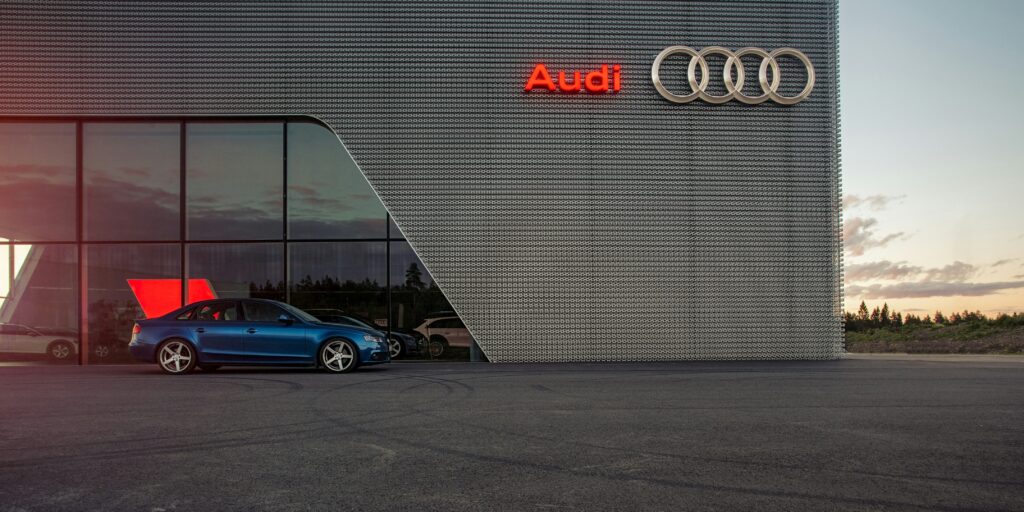Empowering Retail Dealerships in the Digital Age: Adapting to the New Customer Paradigm

Transparency, responsiveness, informativeness, friendliness, and helpfulness are the attributes retail dealership customers have always wanted. It’s what we all want anytime we go to a store to buy anything.
When I started in the business in the early ’80s, the retail dealership industry was far from this ideal. We owned the product and all the information, forcing customers to come to us to get it. Everything changed from 1998 to 2006. In what now seems like the blink of an eye, the industry had to face the true essence of retail sales.
The Internet Revolution: Empowering the Modern Customer
The main driver of change in the retail dealership industry was the emergence and widespread adoption of the Internet. The Internet gave customers access to a wealth of information that was previously unavailable or hard to obtain. Customers could now compare prices, features, reviews, and ratings of different models and brands online without having to visit multiple dealerships or rely on salespeople’s claims. They could also determine the true value of their trade-ins, explore financing options, and identify the best time to buy.
Additionally, the internet enabled customers to communicate with each other and share their experiences and opinions on various platforms, such as forums, blogs, and social media. This shift in information asymmetry empowered customers and changed their expectations and behavior almost overnight. Customers became more savvy, confident, and demanding. They wanted more choices, convenience, and value. They also sought greater transparency and honesty from dealerships and salespeople. Loyalty to specific brands or dealerships waned as customers were more willing to shop around and negotiate. They increasingly used online tools and services, such as car-buying websites, aggregators, and brokers, to simplify and expedite their purchase process.
“IN TRUE VEHICLE DEALER FASHION, WE COLLECTIVELY DECIDED WE WOULDN’T ALLOW THAT, SO WE RESISTED. SOME STILL ARE, AND COVID GAVE US A REASON TO BACK UP.”
Resistance and Adaptation: The Dealership Industry’s Response
The rise of the internet and the empowered customer had a profound impact on the retail dealership industry and salespeople. The industry had to adapt to the new reality and find ways to compete in a crowded and commoditized market. Dealerships invested in technology, such as websites, CRM systems, and online marketing, to attract and retain customers. They also improved customer service, quality, and reputation to build trust and loyalty. Offering more value-added services, such as warranties, maintenance, and financing, became crucial for increasing profitability and customer satisfaction.
However, simply having the software wasn’t enough. We thought it would magically solve our problems, but without direction and proper implementation, it didn’t work. Salespeople also had to change their roles and approach to meet the needs and expectations of the new customer. They had to become more knowledgeable, professional, and consultative. Instead of pushing products and features, they needed to provide accurate information, answer questions, and offer solutions. They had to listen to the customer’s needs, preferences, and budget, and tailor their recommendations accordingly. Salespeople needed to be more responsive, courteous, respectful, and transparent, avoiding high-pressure tactics and hidden fees. Building long-term relationships and seeking referrals became more important than quick sales.
The Ongoing Challenge: Who Owns the Customer Experience?
All of this is 100% true, and here we are 20+ years later. How is your plug-and-play software doing that? Walk through it step by step. Who’s driving your dealership or your customer? No, it’s your salespeople, each in a different way, if they are doing it at all. So, who owns the customer experience? Who should own it?
“I’M NOT GOING TO ANSWER THESE QUESTIONS—YOU ALREADY KNOW THE ANSWERS. THE QUESTION IS, WHAT ARE YOU DOING ABOUT IT?”
The Path Forward for Dealerships and Salespeople
The retail dealership industry underwent a significant transformation from 1998 to 2006, driven by the rise of the Internet and empowered customers. The industry had to adapt to the new market conditions and customer demands to succeed. Yet, many dealerships have not fully adopted the necessary changes, relying on untrained, poorly equipped, commission-based salespeople with no formal dealership process. I hear it now… “We have a process!” Is it in writing? Is it baked into your playbook? Do you have a playbook? If not, you don’t have a process, and it’s not real. Does it change with every new manager you hire?
Moreover, salespeople also need to change their mindset and skills, becoming more customer-centric and value-oriented, but this change is happening too slowly. The retail dealership industry and salespeople still have a long way to go in understanding what retail sales are about providing value, service, and trust to the customer. We talk about these things, but are we really doing it, living it? I still hear salespeople say they don’t want customers to waste their time.
“If you are a retail salesperson, customers—ALL CUSTOMERS—ARE THE ONLY REASON YOU EXIST IN THE DEALERSHIP. They all know other people; they have social media, and they all talk.”
Are our salespeople equipped with the tools, and I don’t just mean software, to be responsive, informative, friendly, and helpful? Do they have a process by which to do so? Do we inspect what we expect from that process?
“Again, I am not going to answer those questions—you know the answers. Stop talking about it and do something.”


